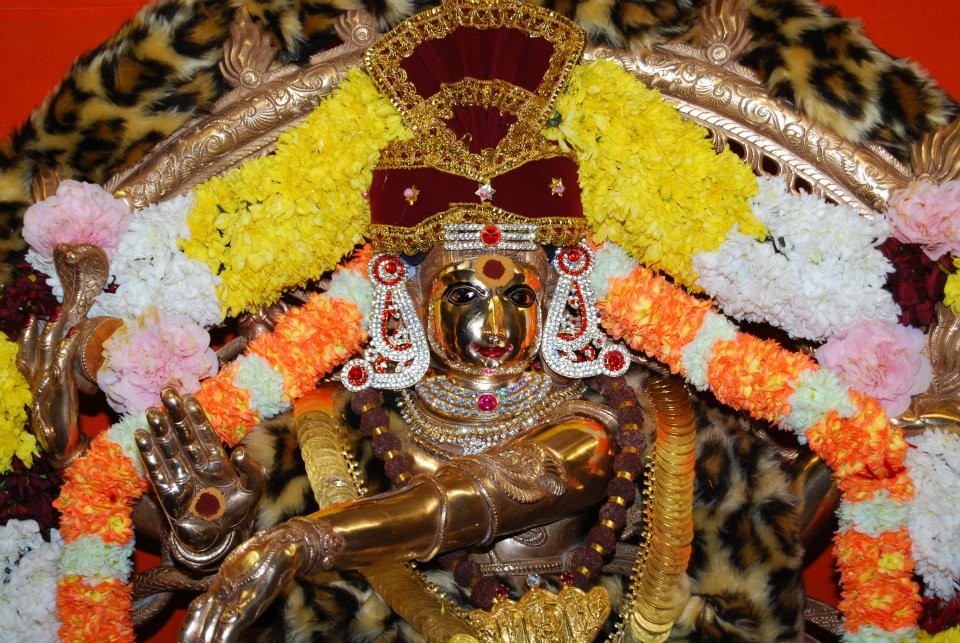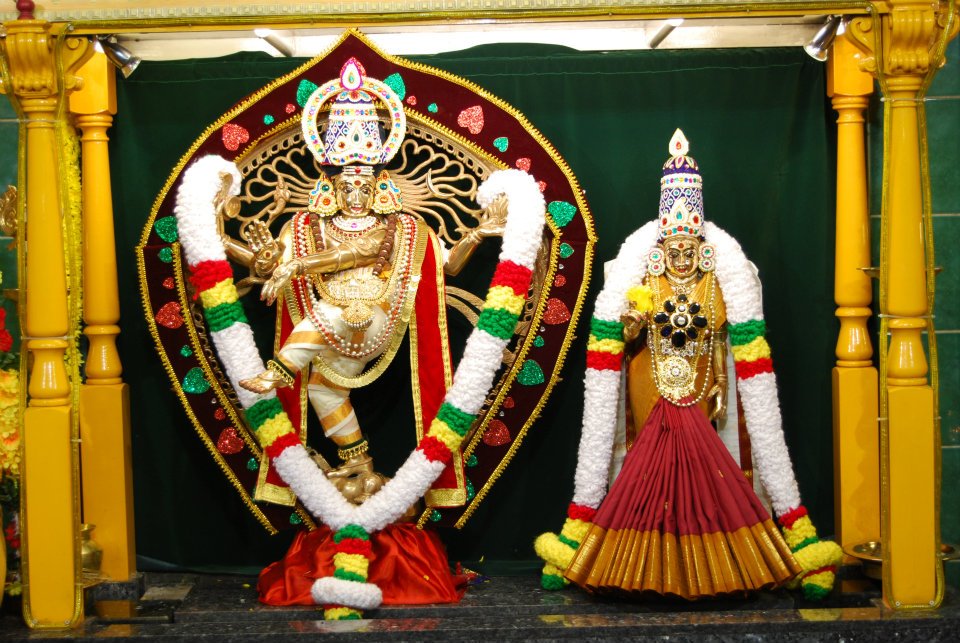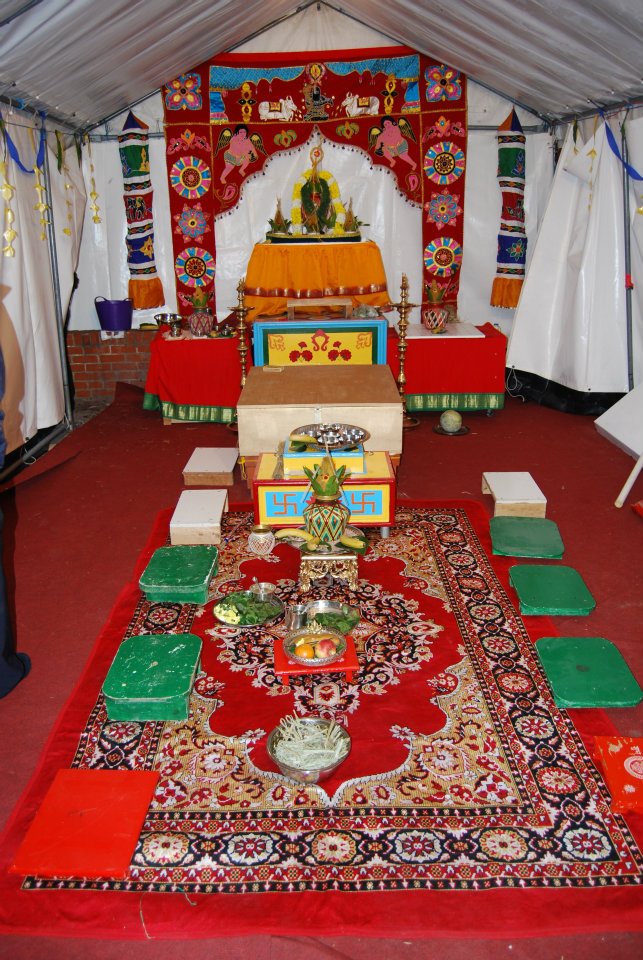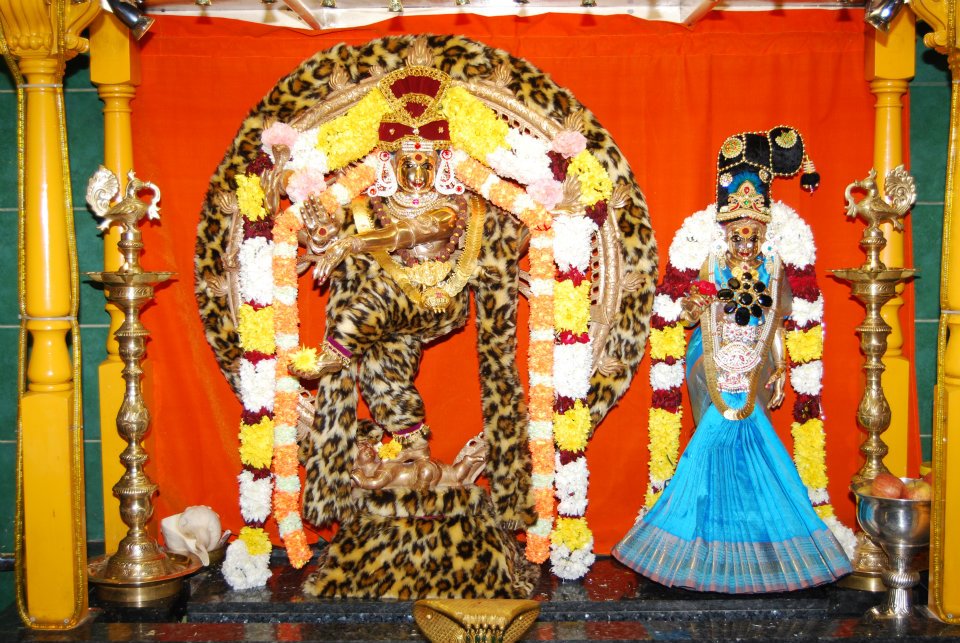Arulmihu London Nadarajar Temple
The temple is administrated by Sivayogam, a charity registered with the charity commission in 1995. It is situated at 3C, Ranelagh Road, Wembley, Middx, HA0 4TW. This is the first temple for Nadarajar outside Asia.

Nataraja, meaning "the lord of dance" is a depiction of the Hindu god Shiva as the cosmic ecstatic dancer. His dance is called Tandavam or Nadanta, depending on the context of the dance.
This cosmic dance of Shiva is called 'Anandatandava,' meaning the Dance of Bliss, and symbolizes the cosmic cycles of creation and destruction, as well as the daily rhythm of birth and death
Shiva as Lord of Dance (Nataraja), ca. 11th century. As a symbol, Shiva Natarajais a brilliant invention. It combines in a single image Shiva's roles as creator, preserver, and destroyer of the universe and conveys the Indian conception of the never-ending cycle of time.
The sculpture is symbolic of Shiva as the lord of dance and dramatic arts, with its style and proportions made according to Hindu texts on arts. It typically shows Shiva dancing in one of the Natya Shastra poses, holding Agni (fire) in his left back hand, the front hand in gajahasta (elephant hand) or dandahasta (stick hand) mudra, the front right hand with a wrapped snake that is in abhaya (fear not) mudra while pointing to a Sutra text, and the back hand holding a musical instrument, usually a damaru. His body, fingers, ankles, neck, face, head, ear lobes and dress are shown decorated with symbolic items, which vary with historic period and region. He is surrounded by a ring of flames, standing on a lotus pedestal, lifting his left leg (or in rare cases, the right leg) and balancing over a demon shown as a dwarf (Apasmara or Mulakaya) who symbolizes ignorance. The dynamism of the energetic dance is depicted with the whirling hair which spread out in thin strands as a fan behind his head. The details in the Nataraja artwork have been variously interpreted by Indian scholars since the 12th-century for its symbolic meaning and theological essence.
Nataraja is a well known sculptural symbol in India and popularly used as a symbol of Indian culture, in particular as one of the finest illustrations of Hindu art.
A cobra uncoils from his lower right forearm, and the crescent moon and a skull are on his crest. He dances within an arch of flames. This dance is called the Dance of Bliss, aananda taandavam. The upper right hand holds a small drum shaped like an hourglass that is called a ḍamaru in Sanskrit. A specific hand gesture (mudra) called ḍamaru-hasta (Sanskrit for “ḍamaru-hand”) is used to hold the drum. It symbolizes sound originating creation or the beat of the drum is the passage of time.
The upper left hand contains Agni or fire, which signifies destruction. The opposing concepts in the upper hands show the counterpoise of creation and destruction or the fire of life. The second right hand shows the Abhaya mudra (meaning fearlessness in Sanskrit), bestowing protection from both evil and ignorance to those who follow the righteousness of dharma.
The second left hand points towards the raised foot which signifies upliftment and liberation. It also points to the left foot with the sign of the elephant which leads the way through the jungle of ignorance. The dwarf on which Nataraja dances is the demon Apasmara (Muyalaka, as known in Tamil), which symbolises Shiva’s victory over ignorance. It also represents the passage of spirit from the divine into material.
As the Lord of Dance, Nataraja, Shiva performs the tandava, the dance in which the universe is created, maintained, and dissolved. Shiva’s long, matted tresses, usually piled up in a knot, loosen during the dance and crash into the heavenly bodies, knocking them off course or destroying them utterly.
The surrounding flames represent the manifest Universe. The snake swirling around his waist is kundalini, the Shakti or divine force thought to reside within everything. This also parallels the cords of life worn by the Brahmins to represent the second rebirth. The stoic face of Shiva represents his neutrality, thus being in balance.



